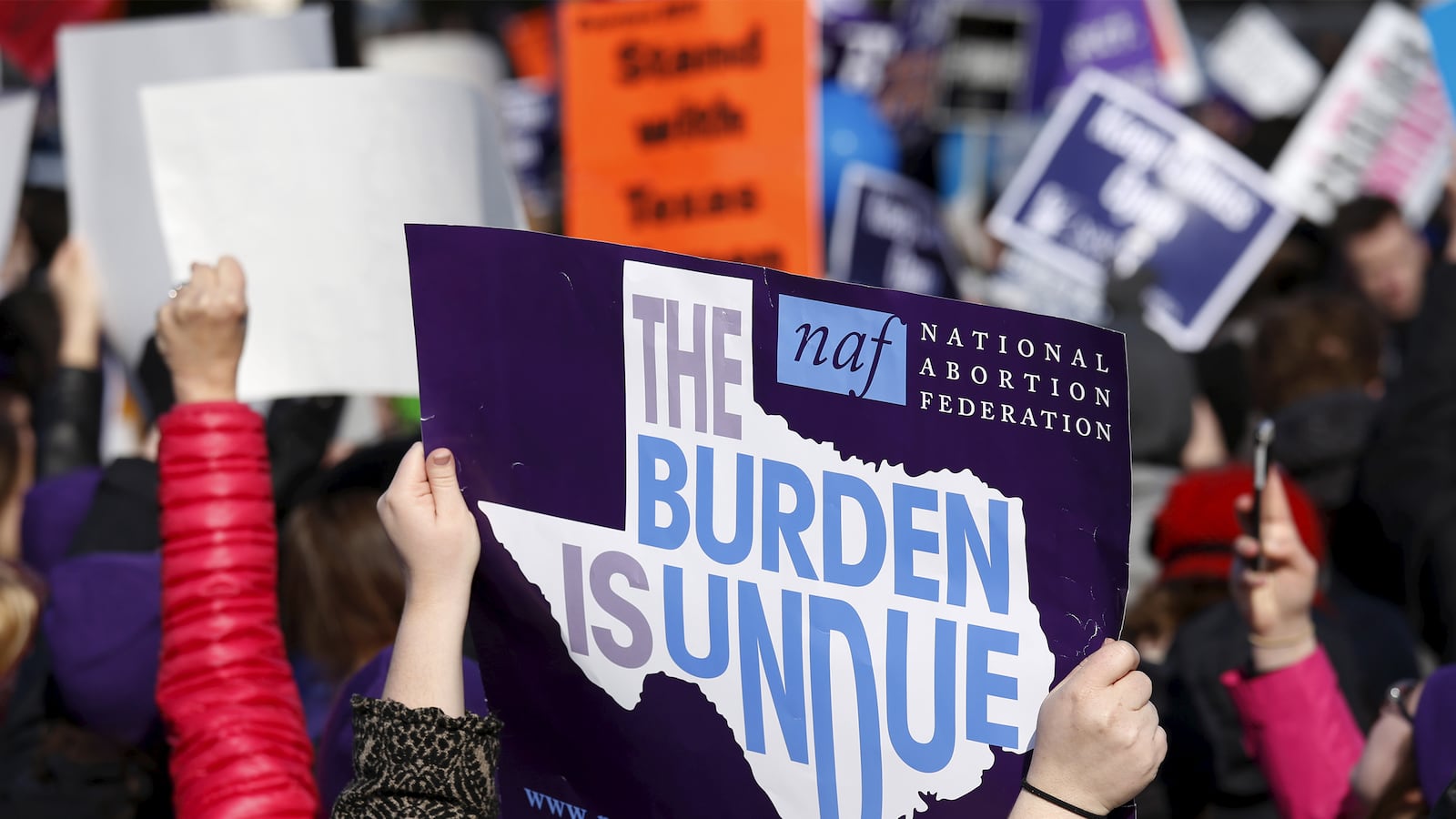The Supreme Court is currently deciding whether or not Texas legislation imposes an “undue burden” on women seeking abortion. Now, that burden can be measured.
House Bill 2 (HB 2), the law currently under review in Whole Woman’s Health v. Hellerstedt, requires abortion providers to meet the same standards as ambulatory surgical centers and to have admitting privileges at a hospital within 30 miles. Since it passed, over half of Texas abortion clinics have shut their doors.
Research from the Texas Policy Evaluation Project (TxPEP) at the University of Texas - Austin has analyzed the effects of HB 2 and the clinic closures it caused. One study estimated that 100,000 or more Texan women, particularly Latinas in the Rio Grande Valley, have attempted to self-induce an abortion. Another study found that wait times have increased drastically at some clinics as they struggle to accommodate a higher volume of patients. At some clinics in Austin, wait times were as long as 20 days. Comparable wait times statewide would almost double the number of second-trimester abortions, the researchers estimated.
But now, TxPEP has produced its most precise measurement yet of HB 2’s impact. The study, published Thursday in the American Journal of Public Health, analyzed survey responses from nearly 400 women who had abortions at 10 Texas clinics between May and August of 2014. The findings are shocking.
Women whose nearest clinic closed after HB 2 had to travel an average of 85 miles one-way to seek an abortion. Before the law was implemented, the nearest clinic for these women was located only 17 miles away on average. Many of these women had to navigate particularly extreme distances: A quarter lived over 139 miles from the nearest provider and 10 percent lived over 256 miles away.
And with more travel, of course, comes more expenses. The vast majority of women whose nearest clinic remained open post-HB 2 were able to avoid an overnight stay, but 16 percent of women whose nearest clinic closed had to stay overnight for their procedure because Texas imposes a 24-hour waiting period on women seeking abortion. Nearly a third of women whose nearest clinic was shuttered had to spend over $100 out-of-pocket to cover expenses like transportation, lodging, child care, and lost wages. Not only did HB 2 make abortion less accessible and more expensive, it also changed the kind of procedures some women are able to receive. Thirty-seven percent of women whose nearest clinic closed had to get a surgical procedure instead of the pill-based medical abortion they originally wanted. The abortion pill is generally used within the first nine weeks of pregnancy, which means that women facing delay getting to—or getting an appointment at—their nearest clinic may miss the window. Texas prohibits the use of telemedicine to dispense this medication, requiring women to collect the prescription in person.
Overall, 36 percent of women whose nearest clinic closed said that obtaining an abortion was difficult compared to a still-sobering 18 percent of women whose nearest clinic stayed open.
“This study is unusual in its ability to assess multiple burdens imposed on women as a result of clinic closures, but it is important to note that the burdens documented here are not the only hardships that women experienced as a result of HB2,” said Liza Fuentes, one of the authors of the study.
Indeed, a smaller study co-authored by Fuentes and published in Contraception found that some women were not able to receive an abortion at all because their clinics had closed and the travel burdens were insurmountable.
In 1992’s Planned Parenthood v. Casey, the Supreme Court allowed some restrictions on abortion so long as they do not constitute an “undue burden,” which was defined as “placing a substantial obstacle in the path of a woman seeking an abortion of a nonviable fetus.”
Long-distance travel. Two-week delays. Overnight stays. Exorbitant out-of-pocket expenses. Unwanted surgeries. In Whole Woman’s Health v. Hellerstedt, eight Supreme Court justices will decide whether or not these are “substantial obstacle[s].” Meanwhile, over five million women of reproductive age in Texas will have to keep dealing with them.






